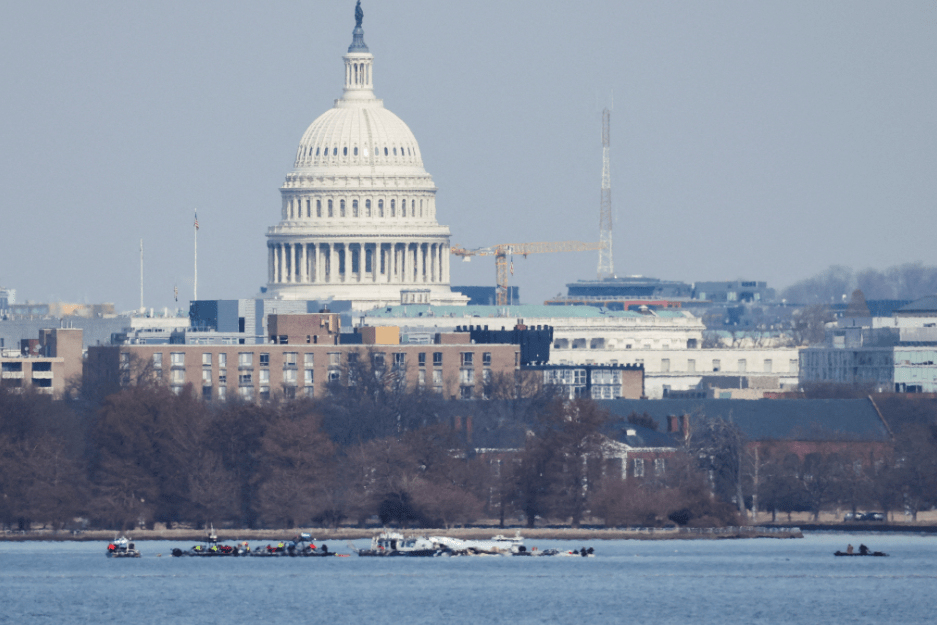A regional jet carrying 60 passengers and four crew members collided with a U.S. Army helicopter near Ronald Reagan Washington National Airport, resulting in the deaths of all aboard both aircraft. The accident, which occurred just three miles from the White House, is under investigation by federal authorities.
Collision and Immediate Aftermath
The crash took place around 9 p.m. on Wednesday in one of the country’s most highly monitored airspaces. The regional jet, an American Airlines-operated Bombardier CRJ-701, was approaching the airport when it was redirected to a shorter runway. Meanwhile, the UH-60 Black Hawk helicopter, carrying three soldiers on a training mission, was operating in the same airspace.
Air traffic controllers had cleared the jet to land and asked the helicopter crew if they had visual contact with the plane moments before the collision. A final directive instructed the helicopter to pass behind the aircraft, but there was no response. Seconds later, both aircraft went down into the Potomac River.
Recovery teams located the plane’s fuselage in waist-deep water, broken into three sections. Wreckage from the helicopter was also found in the river. Investigators have retrieved the cockpit voice recorder and flight data recorder from the jet to analyze the final moments before impact.
Concerns Over Air Traffic Control and Airspace Congestion
Aviation officials are scrutinizing air traffic control procedures from that evening. According to a report from the Federal Aviation Administration, a single controller was managing both arriving and departing aircraft as well as helicopter traffic, a role that is typically assigned to two people. Sources familiar with standard operations say this is not uncommon, as workloads are sometimes adjusted during shift changes or low-traffic periods.
Reagan National Airport sits within an intricate and congested airspace, where commercial and military aircraft frequently operate near restricted zones. Aviation safety experts have raised concerns about a rise in near-collisions at the airport in recent months. Just a day before the crash, another regional jet had to abort its landing at Reagan due to a military helicopter in its flight path.
Victims and Community Impact
At least 28 bodies have been recovered, including the three Army personnel on board the helicopter. The crash was the deadliest U.S. aviation disaster since 2001.
Among the victims were 14 members of the figure skating community returning from an event in Kansas, as well as a college student traveling home from a funeral. Several school students from Virginia, their parents, and a group of hunters were also on board. Two Chinese nationals were confirmed among the deceased.
The Army has stated that the helicopter crew was highly experienced in navigating the region’s airspace. The identities of the soldiers have not been officially released, but social media posts from relatives have confirmed at least one of the pilots.
Aviation Safety and History of Fatal Crashes
Fatal crashes involving commercial jets in the U.S. are rare. The last major incident occurred in 2009 when a flight crashed near Buffalo, New York, killing 50 people. The collision over the Potomac has also drawn comparisons to the 1982 Air Florida crash, which resulted in 78 deaths.












